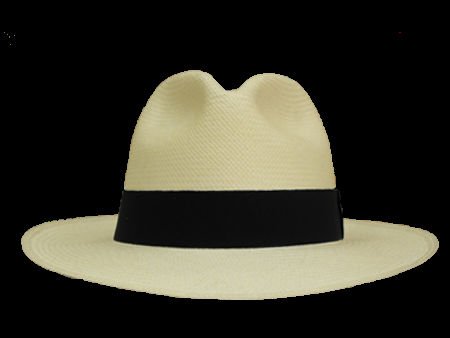A Standard Panama Hat
– Elaine Clow, Librarian, Boscawen Historical Society
A request came in from a descendant of the Raymond family that owned the Tannery at the intersection of Raymond Road and Route 4 in Boscawen. It was to find out whether or not Palm Leaf hats were manufactured in New Hampshire, and more specifically in Fisherville, Franklin, or Boscawen, or nearby.
Census data from the 1830s and 40s indicate there were seven manufacturing establishments employing 57 males and 125 females in the towns of Enfield, Fitzwilliam, Nashua, *Northfield*, Pelham, and Plainfield. The manufacture of Palm leaf hats was also a household industry throughout the state, and a cottage industry of the Shakers. These hats were exported to Cuba, the West Indies, South and Central America, and throughout the British Colonies (think world-wide distribution), although they were not as popular in our colder climate.
The census data goes on to say that most industrially-produced hats were manufactured by “factory girls, where the supply of workers was far greater than the demand. “ Factory girls were generally aged 14 to 21 years of age, and only had part-time employment. The Census statistician of the time went on to report: “the only time which they economize is their sleeping time; and their food is economized for them by circumstances over which it would appear they have but little control. They work for 20 of the 24 hours for $2.50 to $3.00 per week, with room and board of $2.00 per week deducted from the pay. Boarding houses are not favorable women generally, and strangers have difficulty in getting good board.” For many “good” families of this time, a young woman who sought employment in the mills was the social equivalent of a prostitute.
Charles Carleton Coffin had this to say on page 641 of his 1878 History of Boscawen and Webster, after a discussion of the transition of carding and spinning from the home to the mills:
“The industry that in part took the place of spinning and weaving was the braiding of palm-leaf hats. The palm-leaf was purchased in bales by the traders, who supplied it to families who split and braided it into hats. The industry was not a universal one. The merchants paid cash only in part, making, of course, a large profit on the goods sold. Families in comfortable circumstances would not engage in an employment in which they would be at the mercy of the merchant, who, though he might be scrupulously honest, yet could fix his own profit and their measure of gain. It was a jug with only one handle, and that in the hands of the merchant. Notwithstanding this drawback, the industry gave employment to a large number of women and girls, who otherwise had little chance of earning money.”
“By the piece,” production from the cottage industries brought from $1.00 to $1.50 for a dozen hats, and a good worker could earn from $6.00 to $8.00 a month.
You can read more about Boscawen’s early history, and what Mr. Coffin had to say about it at The History of Boscawen and Webster From 1733 to 1878 by Charles Carleton Coffin. Please pay us a visit on line, or stop and see us when the OPEN flag is displayed at 226-228 King Street.
